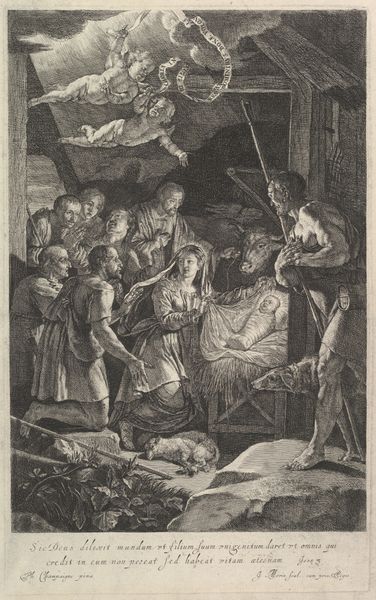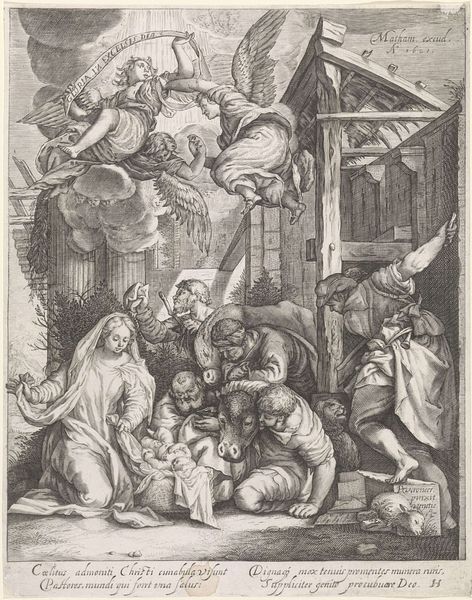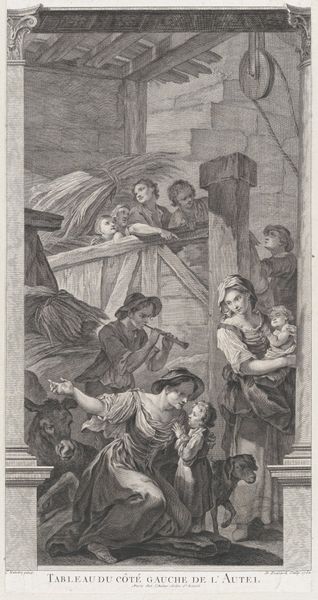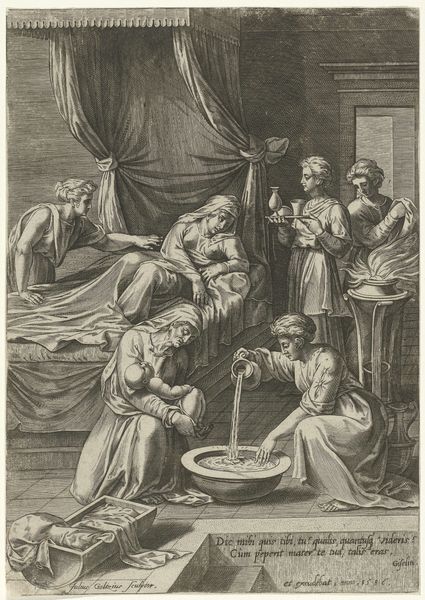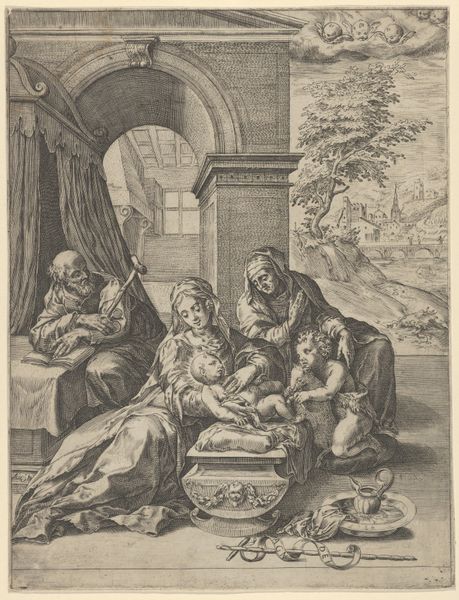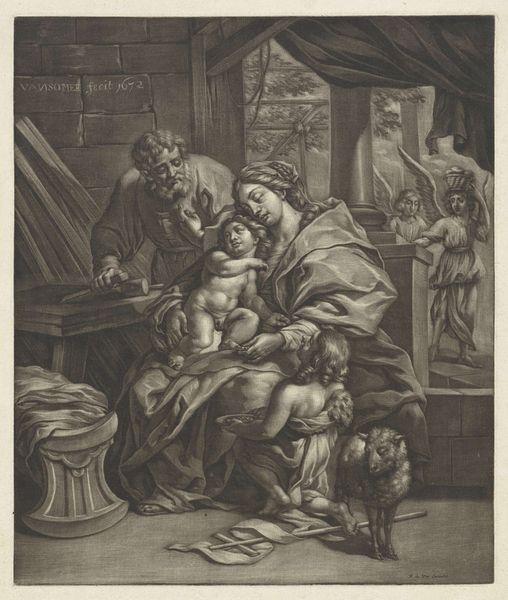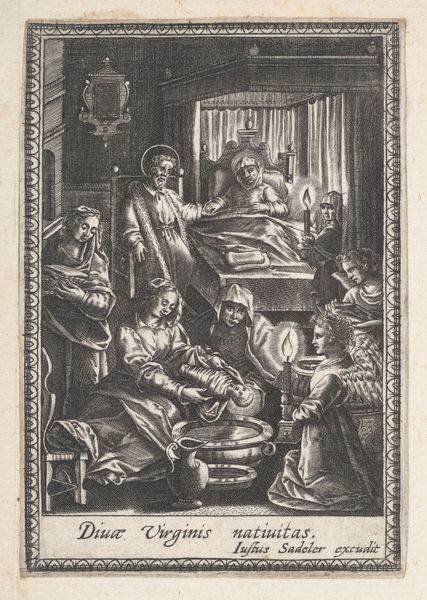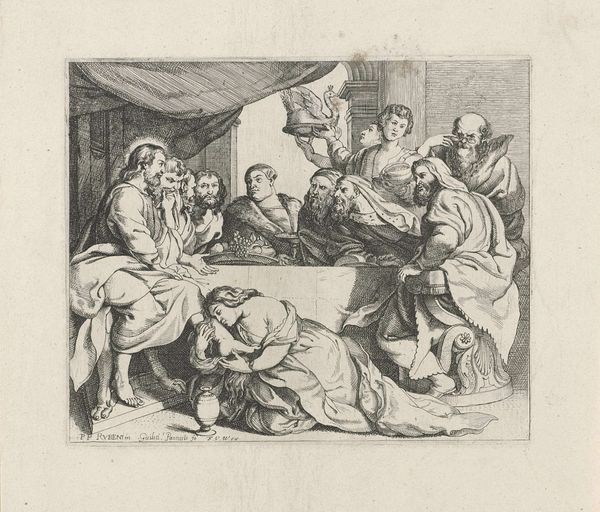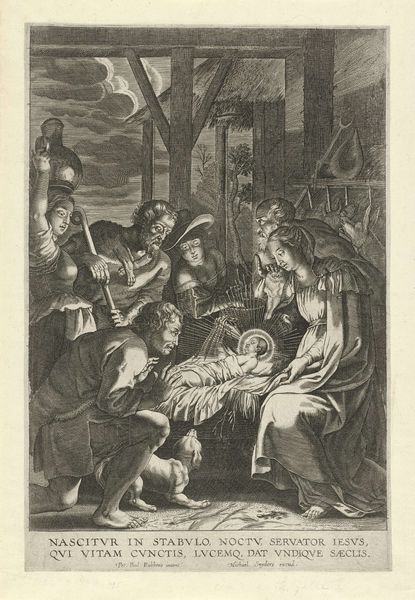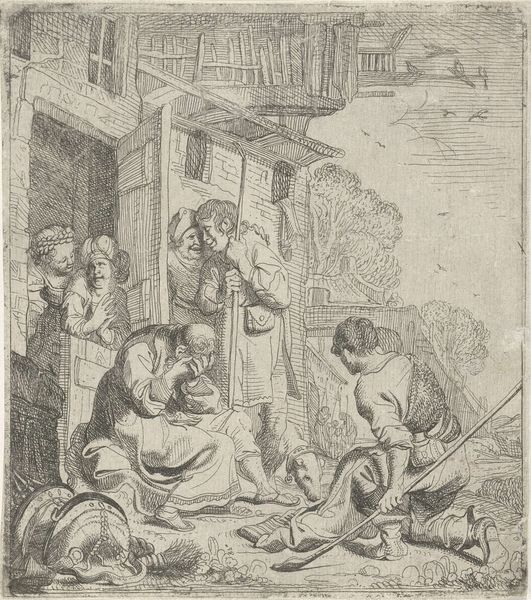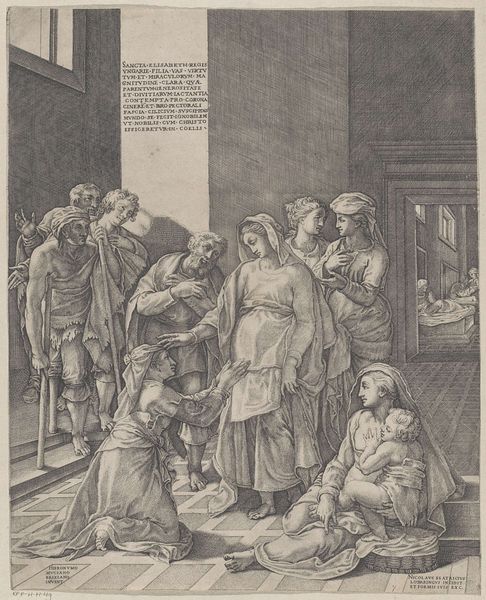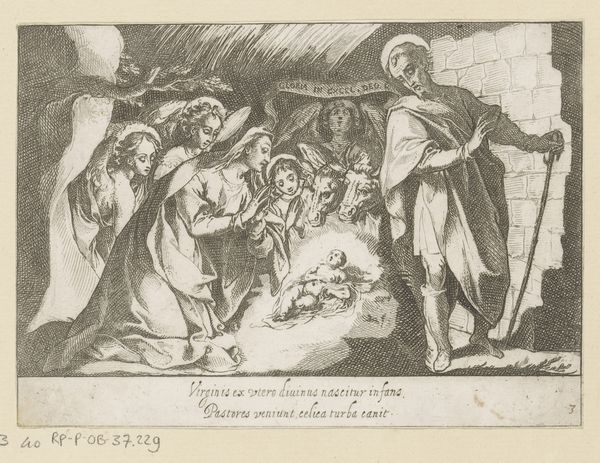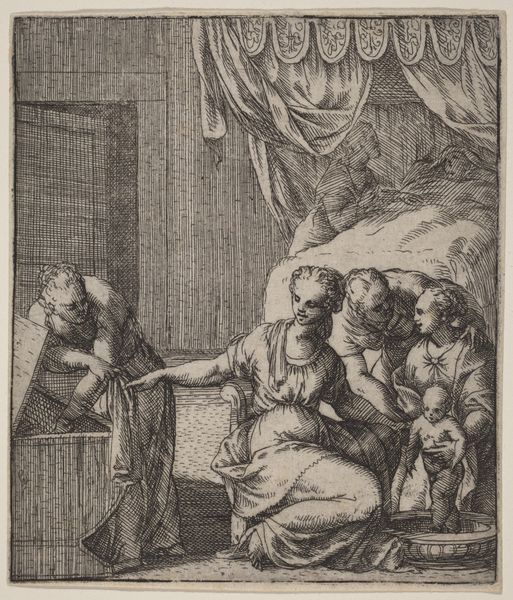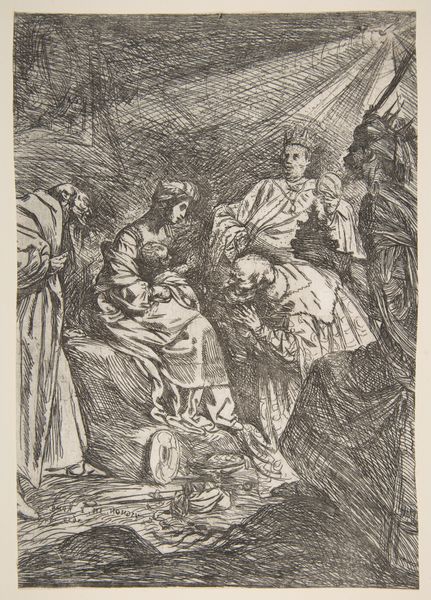
print, engraving
#
narrative-art
#
baroque
# print
#
landscape
#
figuration
#
history-painting
#
engraving
Dimensions: height 211 mm, width 164 mm
Copyright: Rijks Museum: Open Domain
Curator: Here we have Willem Panneels’ engraving, "Adoration of the Shepherds," dating from around 1630. It's a remarkable print now housed at the Rijksmuseum. Editor: It's striking how much narrative he packs into a relatively small space! There’s a quiet reverence about it, almost melancholic, despite the joyous occasion. Curator: Indeed. Notice the careful rendering of light and shadow, typical of the Baroque period. Consider the societal pressures influencing how this narrative, fundamental to Christian identity, was visually interpreted and disseminated. Editor: The postures, too, seem deliberate, almost performative. The adoration is not just internal, it is staged, perhaps influenced by theater and the need to represent the faith publicly during a period of intense religious and political strife. Curator: Precisely. The placement of the figures, forming a protective semi-circle around the Christ child, speaks to the cultural emphasis on family, community, and protection in that era. Each individual shepherd likely stood as a symbol for something more. Editor: Do you think the inclusion of everyday individuals makes it easier for the masses to relate to this sacred moment, creating a more approachable spiritual narrative? Curator: It certainly served to humanize a divine event. By placing humble shepherds at the center of the story, it reinforced a powerful social message and emphasized piety regardless of societal station. Note that many engravers at this time collaborated in larger shops, where specialization was key for the cost effective production of these highly sought after images. Editor: That's interesting. So, a convergence of commercial interests and artistic intent shaped religious imagery. Curator: Absolutely. And reflecting on it all now, the echoes of its cultural weight are quite moving. Editor: A perfect illustration of art as a mirror reflecting society and belief. I’m left thinking about how this image contributed to creating a shared visual language that still reverberates today.
Comments
No comments
Be the first to comment and join the conversation on the ultimate creative platform.
